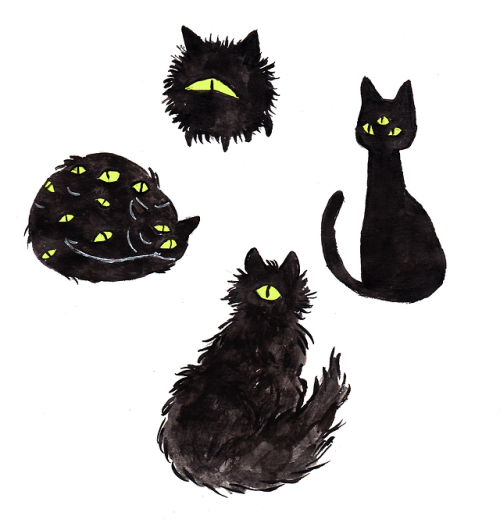Brie My Possum Furby 💛


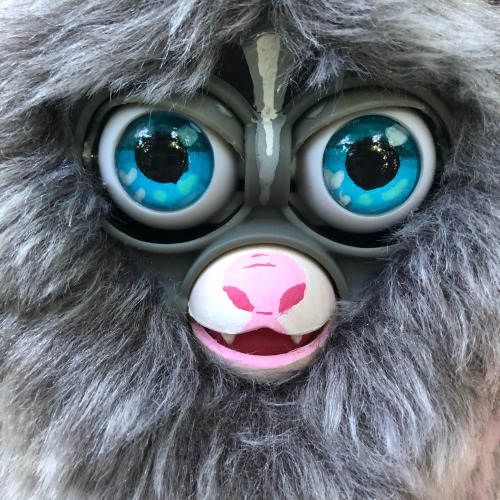



Brie my possum furby 💛
A lot of his process was very collaborative over on my Instagram @raptorfurby! His tail is fully posable and is strong enough to hold him from!
More Posts from Quantumjames and Others
‘am i Having A Brain Problem or Being a Shithead’: a short procrastination checklist
aka why tf am i procrastinating on The Thing (more like a flowchart, actually)
lots of people who have executive function difficulties worry about whether they’re procrastinating on a task out of laziness/simply wanting to be a jerk or mental struggles. this checklist might help you figure out which it is at any given time! (hint: it’s almost never laziness or being a jerk.) (obligatory disclaimer: this is just what works for me! something different might work better for you.)
1) do I honestly intend to start the task despite my lack of success?
yes: it’s a Brain Problem. next question
no: it’s shitty to say one thing & do another. better be honest with myself & anyone expecting me to do the task.
2) am I fed, watered, well-rested, medicated properly, etc?
yes: next question
no: guess what? this is the real next task
3) does the idea of starting the task make me feel scared or anxious?
yes: Anxiety Brain. identify what’s scaring me first.
no: next question
4) do I know how to start the task?
yes: next question
no: ADHD Brain. time to make an order of operations list.
5) do I have everything I need to start the task?
yes: next question
no: ADHD Brain lying to me about the steps again, dangit. first task is ‘gather the materials’.
6) why am i having a hard time switching from my current task to this new task?
i’m having fun doing what i’m doing: it’s okay to have fun doing a thing! if task is time-sensitive, go to next question.
i have to finish doing what i’m doing: might be ADHD brain. can I actually finish the current task or will I get trapped in a cycle? does this task really need to be finished?
the next task will be boring/boring-er than the current task: ADHD brain. re-think the next task. what would make it exciting? what am I looking forward to?
I might not have enough time to complete the task: ADHD brain wants to finish everything it starts. (if task is time-sensitive, go to next question)
i just want to make the person who asked me to do it angry: sounds like anxiety brain trying to punish itself, because I know I’ll be miserable if someone is angry at me. why do i think I deserve punishment?
no, I seriously want to piss them off: okay, i’m being a shithead
7) have I already procrastinated so badly that I now cannot finish the task in time?
yes: ADHD brain is probably caught in a guilt-perfection cycle. since I can’t have the task done on time, i don’t even want to start.
reality check: having part of a thing done is almost always better than none of a thing done. if I can get an extension, having part of it done will help me keep from stalling out until the extension deadline. i’ll feel better if I at least try to finish it.
no, there’s still a chance to finish on time: ADHD brain thinks that I have all the time in the world, but the truth is I don’t.
reality check: if i’m having fun doing what I’m doing, I can keep doing it, but I should probably set a timer & ask someone to check on me to make sure I start doing the task later today.
8) I’ve completed the checklist and still don’t know what’s wrong!
probably wasn’t honest enough with myself. take one more look.
if I’m still mystified, ask a friend to help me talk it out.
hope this helps some of you! YOU’RE DOING GREAT SWEETIE DON’T GIVE UP ON YOU

Somebody got new hands!
Taka commemorates this moment with the traditional "Double Flipping of the Bird." They shall soon be blushed to match his complexion.
Nearly every autistic person on the face of the Earth has been groomed for abuse from an early age.
We don’t attract abuse by being idiosyncratic or sincere. To say that is to blame our personalities. To say that that is to make yet another attempt at getting us to suppress ourselves, ruining our emotional and physical health.
We don’t stumble into abuse because we’re naive or poor judges of character. To say that is to infantilize us. To say that is to make yet another attempt at robbing us of our independence and agency, impoverishing our life experiences.
We find ourselves in toxic, abusive friendships and relationships because we are groomed for that shit by the authority figures in our lives who teach us how to behave and blend in while ignoring the nuances of interpersonal interaction - particularly the nuances of the sorts of interaction that happen when acquaintances become friends, when friends become close friends, or when our relationships with those friends become romantic and/or sexual. They simply don’t see those stages of relating as something we want, or, if we do want them, however desperately, they are dismissed as something that’s simply not in the hand we were dealt. We are taught only how to get by in shallow interactions, and left to trial and error should we wish to pursue anything beyond that.
Unfortunately, a lot of that “error” entails emotional, psychological, physical, and sexual abuse.
If someone asks me what Kingdom Hearts 3 is about, I’m just going to show them this
This explains so much... :(
This is another one that’s just stacking up on information we’ve suspected for a while. When a child is praised for being smart or talented, it makes the stakes that much higher because they need to stay smart or talented in order to maintain their identity. Here’s the crux of this study:
“Adults may feel that praising children for their inherent qualities helps combat low self-esteem, but it might convey to children that they are valued as a person only when they succeed,” Brummelman said. “When children subsequently fail, they may infer they are unworthy.”
I havent seen anyone talk about this yet so im making a post.
So lets say you’re researching something for a paper (or just for fun) and the research paper you want to read is behind a paywall, or the site makes you create an account first, or makes you pay to download, or limits you to only 5 free articles, or otherwise makes it difficult for you to read what you want.

do not fear! copy the link to the article

go to sci-hub.se (the url is always changing so its best to check out whereisscihub.now.sh to find what the current url is)

slap the article link in there

bam! free access!
Why it’s Helpful to Hear Terminology:
I’ve seen some debates about whether having a pretty word for a symptom actually makes any difference, and I’m here to say that it did for at least one person.
I recently learned that sensory overload is something adhd people can experience too, and learning a word for why I always felt “sick” and had to go to the nurse in middle school brought me so much peace. When I learn terminology for my experiences, I feel validated.
It’s like proof that I’m not just being dramatic or weak. Kind of like when I realized that the reason I’ve never been any good at sports was because I’ve had asthma all along. I thought I just tired out quickly.
It’s like having a name for my struggle gives me power over it.
So, TLDR: Terminology can help us feel validated in our experiences, and that can be a great encouragement.
Words for Skin Tone | How to Describe Skin Color
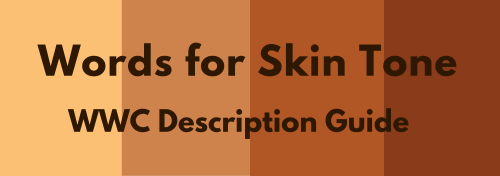
We discussed the issues describing People of Color by means of food in Part I of this guide, which brought rise to even more questions, mostly along the lines of “So, if food’s not an option, what can I use?” Well, I was just getting to that!
This final portion focuses on describing skin tone, with photo and passage examples provided throughout. I hope to cover everything from the use of straight-forward description to the more creatively-inclined, keeping in mind the questions we’ve received on this topic.
Standard Description
Basic Colors

Pictured above: Black, Brown, Beige, White, Pink.
“She had brown skin.”
This is a perfectly fine description that, while not providing the most detail, works well and will never become cliché.
Describing characters’ skin as simply brown or beige works on its own, though it’s not particularly telling just from the range in brown alone.
Complex Colors
These are more rarely used words that actually “mean” their color. Some of these have multiple meanings, so you’ll want to look into those to determine what other associations a word might have.

Pictured above: Umber, Sepia, Ochre, Russet, Terra-cotta, Gold, Tawny, Taupe, Khaki, Fawn.
Complex colors work well alone, though often pair well with a basic color in regards to narrowing down shade/tone.
For example: Golden brown, russet brown, tawny beige…
As some of these are on the “rare” side, sliding in a definition of the word within the sentence itself may help readers who are unfamiliar with the term visualize the color without seeking a dictionary.
“He was tall and slim, his skin a russet, reddish-brown.”
Comparisons to familiar colors or visuals are also helpful:
“His skin was an ochre color, much like the mellow-brown light that bathed the forest.”
Modifiers
Modifiers, often adjectives, make partial changes to a word.The following words are descriptors in reference to skin tone.
Dark - Deep - Rich - Cool
Warm - Medium - Tan
Fair - Light - Pale
Rich Black, Dark brown, Warm beige, Pale pink…
If you’re looking to get more specific than “brown,” modifiers narrow down shade further.
Keep in mind that these modifiers are not exactly colors.
As an already brown-skinned person, I get tan from a lot of sun and resultingly become a darker, deeper brown. I turn a pale, more yellow-brown in the winter.
While best used in combination with a color, I suppose words like “tan” “fair” and “light” do work alone; just note that tan is less likely to be taken for “naturally tan” and much more likely a tanned White person.
Calling someone “dark” as description on its own is offensive to some and also ambiguous. (See: Describing Skin as Dark)
Undertones
Undertones are the colors beneath the skin, seeing as skin isn’t just one even color but has more subdued tones within the dominating palette.
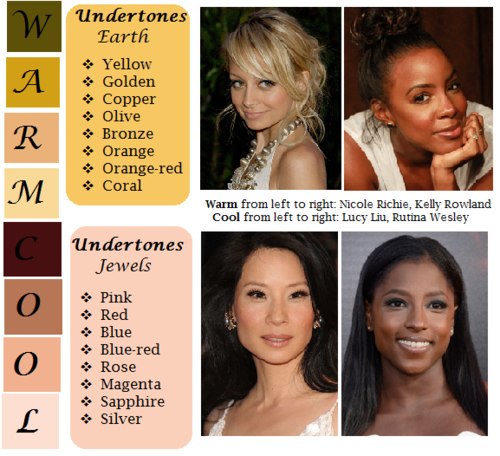
pictured above: warm / earth undertones: yellow, golden, copper, olive, bronze, orange, orange-red, coral | cool / jewel undertones: pink, red, blue, blue-red, rose, magenta, sapphire, silver.
Mentioning the undertones within a character’s skin is an even more precise way to denote skin tone.
As shown, there’s a difference between say, brown skin with warm orange-red undertones (Kelly Rowland) and brown skin with cool, jewel undertones (Rutina Wesley).
“A dazzling smile revealed the bronze glow at her cheeks.”
“He always looked as if he’d ran a mile, a constant tinge of pink under his tawny skin.”
Standard Description Passage
“Farah’s skin, always fawn, had burned and freckled under the summer’s sun. Even at the cusp of autumn, an uneven tan clung to her skin like burrs. So unlike the smooth, red-brown ochre of her mother, which the sun had richened to a blessing.”
-From my story “Where Summer Ends” featured in Strange Little Girls
Here the state of skin also gives insight on character.
Note my use of “fawn” in regards to multiple meaning and association. While fawn is a color, it’s also a small, timid deer, which describes this very traumatized character of mine perfectly.
Though I use standard descriptions of skin tone more in my writing, at the same time I’m no stranger to creative descriptions, and do enjoy the occasional artsy detail of a character.
Creative Description
Whether compared to night-cast rivers or day’s first light…I actually enjoy seeing Characters of Colors dressed in artful detail.
I’ve read loads of descriptions in my day of white characters and their “smooth rose-tinged ivory skin”, while the PoC, if there, are reduced to something from a candy bowl or a Starbucks drink, so to actually read of PoC described in lavish detail can be somewhat of a treat.
Still, be mindful when you get creative with your character descriptions. Too many frills can become purple-prose-like, so do what feels right for your writing when and where. Not every character or scene warrants a creative description, either. Especially if they’re not even a secondary character.
Using a combination of color descriptions from standard to creative is probably a better method than straight creative. But again, do what’s good for your tale.
Natural Settings - Sky

Pictured above: Harvest Moon -Twilight, Fall/Autumn Leaves, Clay, Desert/Sahara, Sunlight - Sunrise - Sunset - Afterglow - Dawn- Day- Daybreak, Field - Prairie - Wheat, Mountain/Cliff, Beach/Sand/Straw/Hay.
Now before you run off to compare your heroine’s skin to the harvest moon or a cliff side, think about the associations to your words.
When I think cliff, I think of jagged, perilous, rough. I hear sand and picture grainy, yet smooth. Calm. mellow.
So consider your character and what you see fit to compare them to.
Also consider whose perspective you’re describing them from. Someone describing a person they revere or admire may have a more pleasant, loftier description than someone who can’t stand the person.
“Her face was like the fire-gold glow of dawn, lifting my gaze, drawing me in.”
“She had a sandy complexion, smooth and tawny.”
Even creative descriptions tend to draw help from your standard words.
Flowers
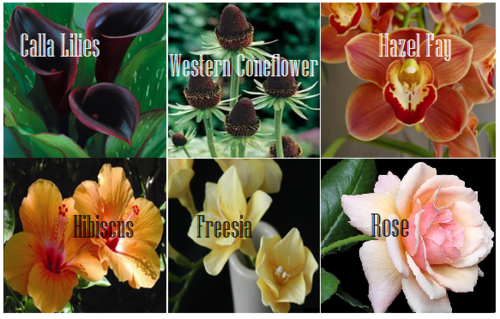
Pictured above: Calla lilies, Western Coneflower, Hazel Fay, Hibiscus, Freesia, Rose
It was a bit difficult to find flowers to my liking that didn’t have a 20 character name or wasn’t called something like “chocolate silk” so these are the finalists.
You’ll definitely want to avoid purple-prose here.
Also be aware of flowers that most might’ve never heard of. Roses are easy, as most know the look and coloring(s) of this plant. But Western coneflowers? Calla lilies? Maybe not so much.
“He entered the cottage in a huff, cheeks a blushing brown like the flowers Nana planted right under my window. Hazel Fay she called them, was it?”
Assorted Plants & Nature

Pictured above: Cattails, Seashell, Driftwood, Pinecone, Acorn, Amber
These ones are kinda odd. Perhaps because I’ve never seen these in comparison to skin tone, With the exception of amber.
At least they’re common enough that most may have an idea what you’re talking about at the mention of “pinecone.“
I suggest reading out your sentences aloud to get a better feel of how it’ll sounds.
"Auburn hair swept past pointed ears, set around a face like an acorn both in shape and shade.”
I pictured some tree-dwelling being or person from a fantasy world in this example, which makes the comparison more appropriate.
I don’t suggest using a comparison just “cuz you can” but actually being thoughtful about what you’re comparing your character to and how it applies to your character and/or setting.
Wood

Pictured above: Mahogany, Walnut, Chestnut, Golden Oak, Ash
Wood can be an iffy description for skin tone. Not only due to several of them having “foody” terminology within their names, but again, associations.
Some people would prefer not to compare/be compared to wood at all, so get opinions, try it aloud, and make sure it’s appropriate to the character if you do use it.
“The old warlock’s skin was a deep shade of mahogany, his stare serious and firm as it held mine.”
Metals

Pictured above: Platinum, Copper, Brass, Gold, Bronze
Copper skin, brass-colored skin, golden skin…
I’ve even heard variations of these used before by comparison to an object of the same properties/coloring, such as penny for copper.
These also work well with modifiers.
“The dress of fine white silks popped against the deep bronze of her skin.”
Gemstones - Minerals
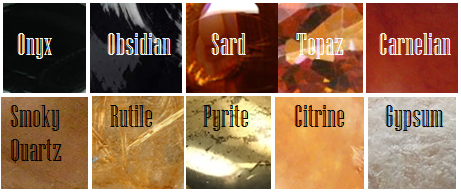
Pictured above: Onyx, Obsidian, Sard, Topaz, Carnelian, Smoky Quartz, Rutile, Pyrite, Citrine, Gypsum
These are trickier to use. As with some complex colors, the writer will have to get us to understand what most of these look like.
If you use these, or any more rare description, consider if it actually “fits” the book or scene.
Even if you’re able to get us to picture what “rutile” looks like, why are you using this description as opposed to something else? Have that answer for yourself.
“His skin reminded her of the topaz ring her father wore at his finger, a gleaming stone of brown, mellow facades.”
Physical Description
Physical character description can be more than skin tone.
Show us hair, eyes, noses, mouth, hands…body posture, body shape, skin texture… though not necessarily all of those nor at once.
Describing features also helps indicate race, especially if your character has some traits common within the race they are, such as afro hair to a Black character.
How comprehensive you decide to get is up to you. I wouldn’t overdo it and get specific to every mole and birthmark. Noting defining characteristics is good, though, like slightly spaced front teeth, curls that stay flopping in their face, hands freckled with sunspots…
General Tips
Indicate Race Early: I suggest indicators of race be made at the earliest convenience within the writing, with more hints threaded throughout here and there.
Get Creative On Your Own: Obviously, I couldn’t cover every proper color or comparison in which has been “approved” to use for your characters’ skin color, so it’s up to you to use discretion when seeking other ways and shades to describe skin tone.
Skin Color May Not Be Enough: Describing skin tone isn’t always enough to indicate someone’s ethnicity. As timeless cases with readers equating brown to “dark white” or something, more indicators of race may be needed.
Describe White characters and PoC Alike: You should describe the race and/or skin tone of your white characters just as you do your Characters of Color. If you don’t, you risk implying that White is the default human being and PoC are the “Other”).
PSA: Don’t use “Colored.” Based on some asks we’ve received using this word, I’d like to say that unless you or your character is a racist grandmama from the 1960s, do not call People of Color “colored” please.
Not Sure Where to Start? You really can’t go wrong using basic colors for your skin descriptions. It’s actually what many people prefer and works best for most writing. Personally, I tend to describe my characters using a combo of basic colors + modifiers, with mentions of undertones at times. I do like to veer into more creative descriptions on occasion.
Want some alternatives to “skin” or “skin color”? Try: Appearance, blend, blush, cast, coloring, complexion, flush, glow, hue, overtone, palette, pigmentation, rinse, shade, sheen, spectrum, tinge, tint, tone, undertone, value, wash.
Skin Tone Resources
List of Color Names
The Color Thesaurus
Skin Undertone & Color Matching
Tips and Words on Describing Skin
Photos: Undertones Described (Modifiers included)
Online Thesaurus (try colors, such as “red” & “brown”)
Don’t Call me Pastries: Creative Skin Tones w/ pics I
Writing & Description Guides
WWC Featured Description Posts
WWC Guide: Words to Describe Hair
Writing with Color: Description & Skin Color Tags
7 Offensive Mistakes Well-intentioned Writers Make
I tried to be as comprehensive as possible with this guide, but if you have a question regarding describing skin color that hasn’t been answered within part I or II of this guide, or have more questions after reading this post, feel free to ask!
~ Mod Colette

Look at him go! Remember when i said i want some little “meet the artist” thing as a pinned post but i dont want to sculpt a self portrait? You all had such awesome ideas and this is what i decided to pick! Now i just gotta see if dumblr allows me to use this and then this fucker is gonna be my new online face! This extremely poorly done animation took me 900 years btw, how on earth do animators do this at all. I do 3 frames and im like “ok this is enough”
-
 cataradical reblogged this · 4 months ago
cataradical reblogged this · 4 months ago -
 kuopanpohja reblogged this · 6 months ago
kuopanpohja reblogged this · 6 months ago -
 grotusque liked this · 8 months ago
grotusque liked this · 8 months ago -
 furbtast1c liked this · 8 months ago
furbtast1c liked this · 8 months ago -
 talkingfurbs reblogged this · 8 months ago
talkingfurbs reblogged this · 8 months ago -
 toothr0tt liked this · 8 months ago
toothr0tt liked this · 8 months ago -
 bobcatdump reblogged this · 8 months ago
bobcatdump reblogged this · 8 months ago -
 laserbobcat liked this · 8 months ago
laserbobcat liked this · 8 months ago -
 valesandvalleys liked this · 8 months ago
valesandvalleys liked this · 8 months ago -
 ekztaci liked this · 8 months ago
ekztaci liked this · 8 months ago -
 discount--dracula reblogged this · 8 months ago
discount--dracula reblogged this · 8 months ago -
 critterchitters-closedcaptions reblogged this · 8 months ago
critterchitters-closedcaptions reblogged this · 8 months ago -
 eldritch-circus-sillies reblogged this · 8 months ago
eldritch-circus-sillies reblogged this · 8 months ago -
 friend-of-furbies reblogged this · 8 months ago
friend-of-furbies reblogged this · 8 months ago -
 friend-of-furbies liked this · 8 months ago
friend-of-furbies liked this · 8 months ago -
 yamok-sause-on-my-titties liked this · 8 months ago
yamok-sause-on-my-titties liked this · 8 months ago -
 abeejasarts liked this · 8 months ago
abeejasarts liked this · 8 months ago -
 c0smiccreatur3 liked this · 8 months ago
c0smiccreatur3 liked this · 8 months ago -
 dabingusbongus reblogged this · 8 months ago
dabingusbongus reblogged this · 8 months ago -
 stormology-apk liked this · 1 year ago
stormology-apk liked this · 1 year ago -
 project3x5 liked this · 1 year ago
project3x5 liked this · 1 year ago -
 18taya liked this · 1 year ago
18taya liked this · 1 year ago -
 lorgepeepo liked this · 1 year ago
lorgepeepo liked this · 1 year ago -
 tonyfurret reblogged this · 1 year ago
tonyfurret reblogged this · 1 year ago -
 tonyfurret liked this · 1 year ago
tonyfurret liked this · 1 year ago -
 caiusvolturi liked this · 1 year ago
caiusvolturi liked this · 1 year ago -
 cataradical liked this · 1 year ago
cataradical liked this · 1 year ago -
 grack53 liked this · 1 year ago
grack53 liked this · 1 year ago -
 humanowitzlegacy liked this · 1 year ago
humanowitzlegacy liked this · 1 year ago -
 fondlymorning liked this · 1 year ago
fondlymorning liked this · 1 year ago -
 sunkissedfurbies reblogged this · 1 year ago
sunkissedfurbies reblogged this · 1 year ago -
 furbiesfriends liked this · 1 year ago
furbiesfriends liked this · 1 year ago -
 technoskates reblogged this · 1 year ago
technoskates reblogged this · 1 year ago -
 technoskates liked this · 1 year ago
technoskates liked this · 1 year ago -
 arsonistman liked this · 1 year ago
arsonistman liked this · 1 year ago -
 kradnie reblogged this · 1 year ago
kradnie reblogged this · 1 year ago -
 kradnie liked this · 1 year ago
kradnie liked this · 1 year ago -
 yellovv reblogged this · 1 year ago
yellovv reblogged this · 1 year ago -
 averygamin2 liked this · 2 years ago
averygamin2 liked this · 2 years ago -
 the-deaths-hands-hellscape liked this · 2 years ago
the-deaths-hands-hellscape liked this · 2 years ago -
 rabidrorschach liked this · 2 years ago
rabidrorschach liked this · 2 years ago -
 shitwhyamiinspace liked this · 2 years ago
shitwhyamiinspace liked this · 2 years ago -
 gazlene reblogged this · 2 years ago
gazlene reblogged this · 2 years ago -
 nuggeteasythelabelhead liked this · 2 years ago
nuggeteasythelabelhead liked this · 2 years ago -
 writedoodwrite liked this · 2 years ago
writedoodwrite liked this · 2 years ago -
 kordbot liked this · 2 years ago
kordbot liked this · 2 years ago
